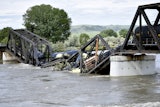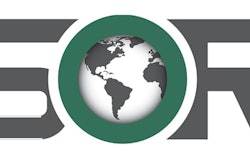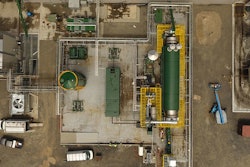Let’s say you have two hundred people working two shifts in your manufacturing site. When it comes to cleaning and maintenance, the restrooms take a beating. In fact, you might think they take more of a beating than any other area in the facility.
Well, they just might. But there is something directly outside your facility that might be in even worse shape, needing even more cleaning and maintenance, and that’s the dumpster.
Restaurant dumpsters are the worst. These dumpsters get what is called “wet” waste dumped in them throughout the day. This includes grease, oil, food items, remnants of pop and alcohol drinks, and more, which soon coats these dumpsters. But any manufacturing site that deals with fresh food will likely have similar wet waste problems.
And even if your manufacturing facility deals primarily with “dry” waste, food items and residue from the cafeteria or lunch area will find their way into dumpsters. Further, oil and grease, spilled containers, soda pop, food cans, bottles, and related warehouse items will likely end up in the dumpster as well.
In some cases, your dumpster will develop cleaning and maintenance issues even if it isn’t even being used. In these situations, the problem is caused by your neighbors.
If your manufacturing site is near a restaurant, grocery store, pet store, a meat market, or a food distribution center, for instance, rodents may invade the dumpsters outside these facilities and then disperse to the quiet and comfort of your unused dumpster to enjoy their meals. Very often, they bring their friends and family with them, and before you know it, you have a rodent problem in your unused dumpster.
The problem, whether it’s wet waste, dry waste, or your neighbors waste, is that dumpsters can become seriously contaminated. As they do, they release odors that welcome even more visitors such as insects of every shape, size, and color, along with mice and rats. They are all looking for food, shelter, and something to drink, all of which a soiled dumpster can provide.
Further, in the cold of winter, dumpsters, especially if they have cardboard and plastic in them, offer shelter and warmth, making them all the more desirable. And just so we do not forget, dumpsters are typically installed right next to buildings and often the open back entries of buildings. This means the inhabitants of these dumpsters are quite likely to come dashing inside your facility, just to have a look around.
Reducing Your Dumpster’s Curb Appeal
Along with becoming a health problem, facility managers should know that in many localities, manufacturing sites can be cited for various health infringements if dumpsters are infested with rodents. Very often these fines increase the more often the same facility is cited.
Because of this, here are some steps you can take to help reduce your dumpster’s curb appeal:
- Reduce or eliminate vegetation directly around the dumpster (some rodents use vegetation as hiding places when necessary).
- Make sure there are no tree branches in the immediate area of the dumpster; climbing up tree branches is an easy escape route.
- Make sure all waste is bagged; the bag is tied, and all bags are placed in the dumpster.
- Flatten all cardboard; it should be bound and placed separately for recycling.
- Cans and bottles should be rinsed before placing in the dumpster.
- Keep the trash area dry, clean, and organized; clutter and disorder tends to attract rodents.
- If the dumpster has drains, make sure they do not allow rodents inside.
- The lids on dumpsters should close firmly and securely around the dumpster.
- Lock the dumpster when not in use. This prevents neighbors from tossing their trash in your dumpster.
Dumpster Maintenance
Traditionally, dumpsters and trash areas have been cleaned by “decking” them down using brushes on poles or pressure washing the area using powerful cleaning solutions. Rarely are these cleaning solutions environmentally preferable, so they have the potential of being harmful to the user, those nearby, as well as the environment.
A healthier option — healthier for the user and the environment — is to use cleaning solutions that “digest soils.” These are referred to as microbial cleaning products. Along with digesting soils, they help eliminate malodors, so the dumpster does not attract new visitors. Here is the way they work:
- Using a dispensing system, the product is applied to the interior and exterior of the dumpster and surrounding area.
- The microbial cleaning solution contains a specially selected bacteria that eats soils but does not impact the environment.
- As the bacteria begins digesting germs and bacteria, it also releases enzymes that help convert soils into carbon dioxide and water.
- The digested waste can then be washed away with pure water and dispensed down drains; there are no environmental concerns.
One of the benefits of using microbial cleaning products is that they can continue working on surfaces for up to 80 hours after they have been applied. This means that if a dumpster is severely coated with soils and contaminants, microbial cleaners can be allowed to “dwell” on the dumpster, to help break down the soils.
We should also note that microbial products have been used for far more things than just cleaning dumpsters. In the past, they have been used to help clean up oil spills, and in one recent San Diego case, they were used to clean bird droppings that were causing a very bad stench in a city park. This tells us these cleaners have considerable cleaning power and potential.
Mike Watt is Director, Director, Training and New Product Development at Avmor, a North American manufacturer of professional cleaning solutions.























